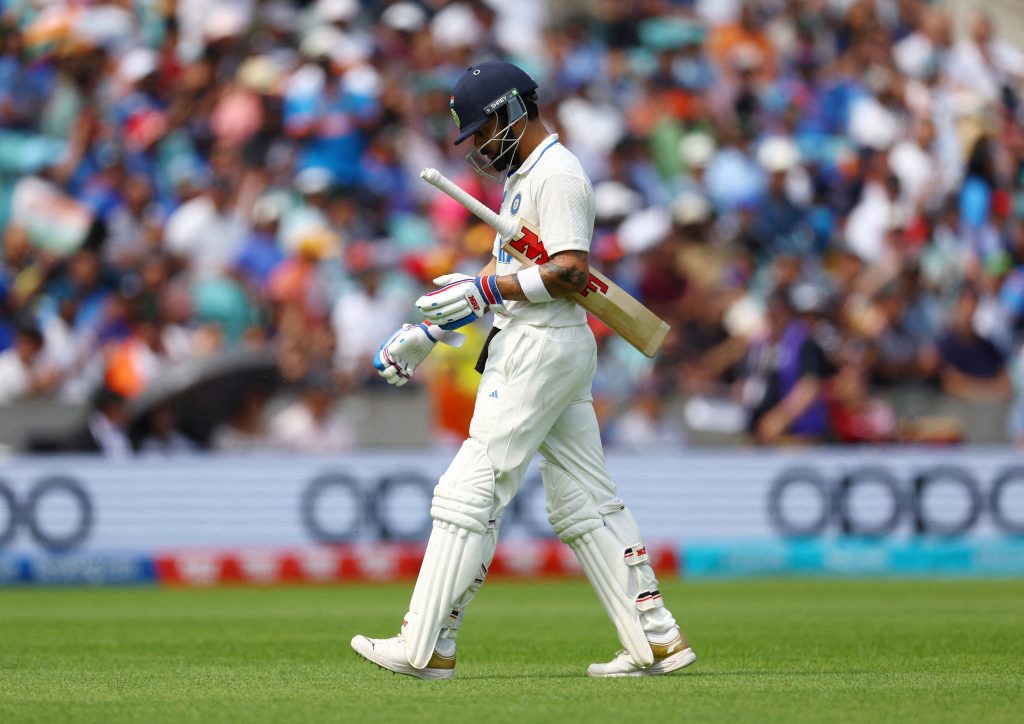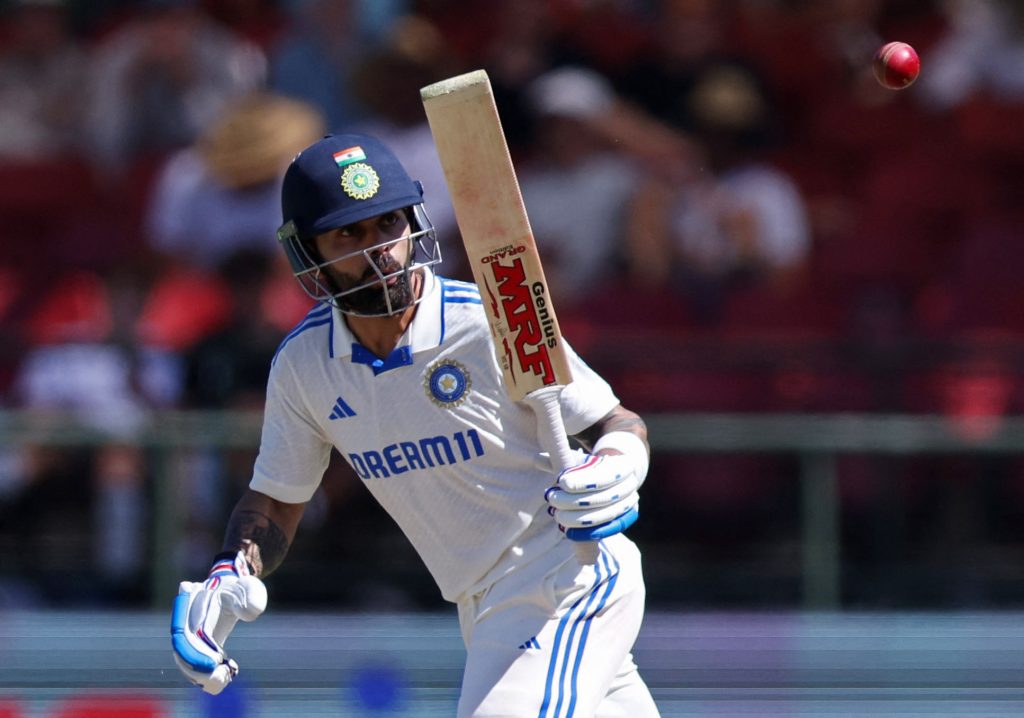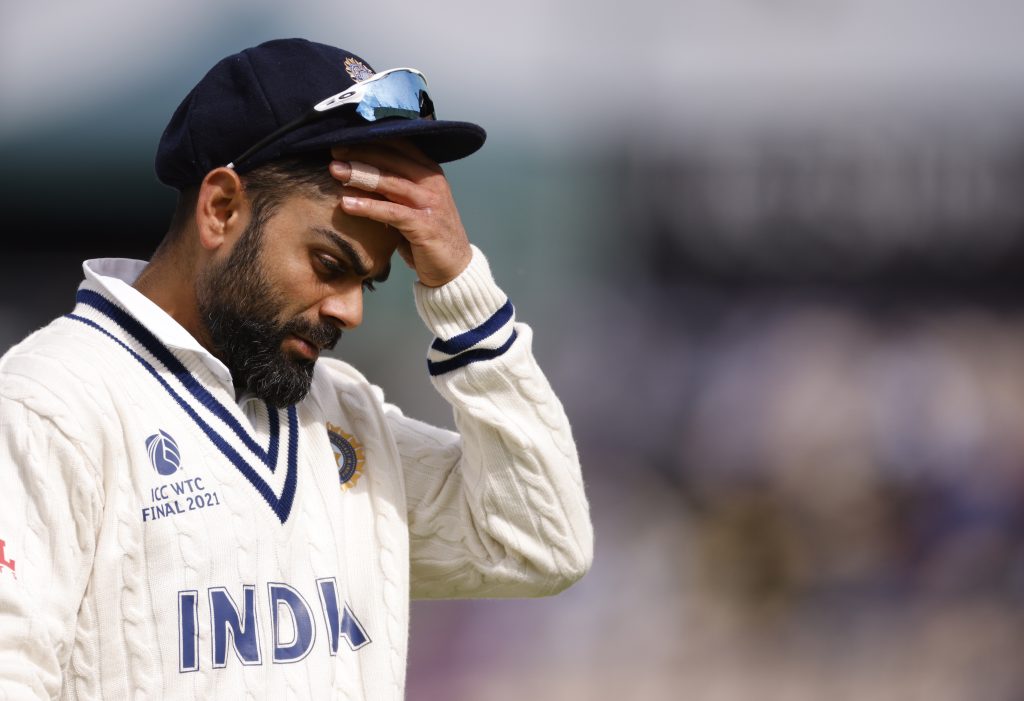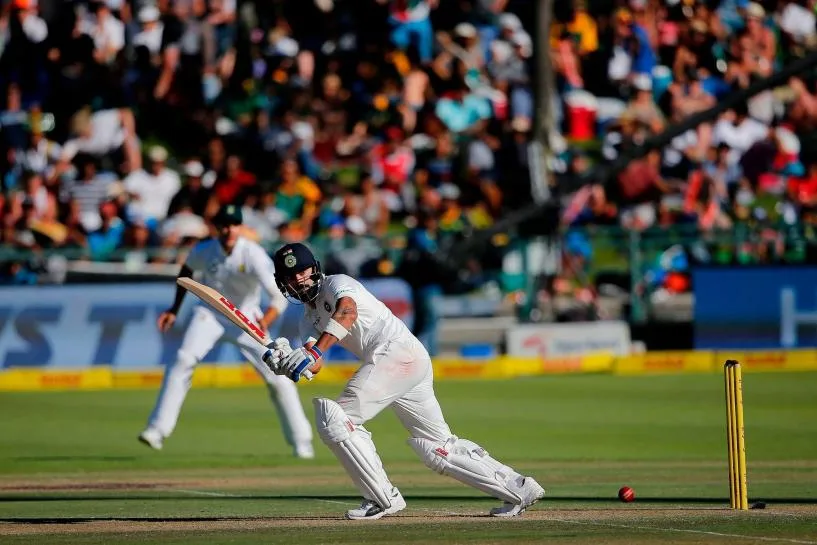From 2014-15 to 2021-22, Virat Kohli elevated the Indian Test team to unparalleled heights. To grasp why Kohli is exceptional among Indian Test captains, it’s essential to consider the team’s trajectory before his leadership.
Kohli’s captaincy delivered 40 Test victories — the fourth-highest total in Test history and 13 more than any other Indian captain. Under him, the team faced 17 losses, giving him an impressive win-loss ratio of 2.352. In comparison, his successor, Rohit Sharma, with a minimum of 10 matches, has a ratio of 1.714.

When Kohli stepped down after over seven years at the helm, he had contributed to nearly a quarter of India’s 166 Test match wins.
Table of Contents
Kohli’s Transformation of India’s Test Legacy
India’s journey in Test cricket spanned over 82 years before Kohli took charge. The team’s first Test win came in 1951-52, with the first overseas win following in 1967-68. Victories were rare, and fans were unaccustomed to India winning Tests abroad, let alone series. Wins came sporadically, making it difficult to consider India a dominant force in Test cricket.
When Kohli assumed leadership, India had only secured 38 Test wins outside of India – though this count is somewhat misleading. Of these, six were against Bangladesh, three against Zimbabwe, three against New Zealand in 1967-68 when they were the weakest Test team, and two against an under-strength Australian side in 1977-78, led by a retired Bobby Simpson due to the absence of players in Kerry Packer’s league.
Excluding these matches, India’s pre-Kohli overseas win count drops to 24. Under Kohli, however, India added 16 more to this tally (or 18, including two wins under Ajinkya Rahane’s leadership during Kohli’s absence in Australia in 2020-21). These victories weren’t against weak teams, either. While five of these came in Sri Lanka (2-1 in 2015 and 3-0 in 2017) during a transitional phase, Sri Lanka still managed notable wins, including a 3-0 sweep over Australia in 2016 and series victories over South Africa and Pakistan.
During Kohli’s captaincy, India also achieved an 18-series unbeaten streak stretching from 2012-13 to 2024-25, with Kohli at the helm for 11 of those series and Rahane leading one.
Yet, some may argue that a captain’s strength is only as good as his team. Leadership alone cannot transform a side overnight. So, what exactly did Kohli do to shape India’s Test legacy?
Prioritizing Bowling Over Batting Depth
For India to achieve consistent Test wins, especially abroad, taking 20 wickets became essential — requiring a solid bowling unit, particularly a strong pace attack outside the subcontinent. While previous captains acknowledged the need for bowlers, they rarely implemented this strategy as aggressively as Kohli did.
From his first series as full-time captain in Sri Lanka in 2015, Kohli emphasized an extra bowler over a deep batting lineup. Historically, India had leaned on six-batsman teams, a structure dating back to the days of Kapil Dev, Ravi Shastri, and Manoj Prabhakar. Kohli, however, aimed to overhaul this approach.

He often included Jayant Yadav alongside R. Ashwin and Ravindra Jadeja, with Hardik Pandya proving an ideal option in conditions abroad, including in the challenging “SENA” countries (South Africa, England, New Zealand, and Australia). By 2018, India had adjusted to a four-bowler setup with Pandya in the lineup, and during the 2017-18 tour of South Africa, Kohli even fielded five pace bowlers, marking a strategic shift that led to a victory.
This bold approach paid off; by year-end, India clinched their first-ever Test series win in Australia. Although their experiment with four tail-end fast bowlers at Perth didn’t yield the desired result, Ishant Sharma, Mohammed Shami, and Jasprit Bumrah collectively took 130 wickets that year — a world record for a fast-bowling trio in a single calendar year.
In home conditions, Kohli seamlessly adapted, prioritizing spin and consistently dominating series with emphatic wins, often via clean sweeps.
India’s resilience under Kohli shone again after being bowled out for 36 at Adelaide in 2020. Kohli departed the tour thereafter, but not before strategizing with Ajinkya Rahane and the coaching staff, leading to a tactical shift with Ravindra Jadeja stepping in. Once more, Kohli’s insistence on an aggressive bowling setup over batting depth proved transformative, propelling India to an iconic series win.
Even in the 2021 England series, Kohli prioritized pace, fielding four fast bowlers and opting to leave out Ravichandran Ashwin, the world’s top-ranked spinner at the time, for four consecutive Tests. Although the series was ultimately postponed with India leading 2-1, Kohli’s commitment to a bowling-centered strategy had firmly redefined India’s approach.
Virat Kohli’s Vision: The Fittest Team on the Planet
India was rarely counted among the top fielding teams. Cricket, a skill-driven sport, had traditionally placed less emphasis on athletic fitness compared to other sports. Virat Kohli aimed to change this perception entirely.
While he knew that strong bowling was key to his vision of making India “the greatest team on the planet,” Kohli also prioritized fitness, striving for India to become “the fittest team.” The advancements in sports science during his tenure bolstered this goal. Under Kohli, Indian cricketers were required to pass rigorous fitness benchmarks, such as a 17:1 score on the yo-yo test or completing two kilometers within eight minutes and 15 seconds (with a slight allowance for fast bowlers).
Though these strict fitness standards drew criticism and even mockery, Kohli’s impressive record, especially in overseas conditions, proved that his methods were effective.
Embracing the Risk: Kohli’s Bold Approach to Chasing Victory
When Virat Kohli took on the captaincy for the first time in Adelaide in 2014-15, he set the tone for a bold new era in Indian Test cricket. Australia held a strong 364-run lead by day four’s end, but Kohli had already decided: “No matter what target they set, we are going to chase it down.”
MS Dhoni, for whom Kohli was standing in, reminded him of the responsibility as captain: “You might believe in the chase, but as captain, you also need to consider the others – can the team pull off a 360 chase on the final day?” Kohli’s response was as daring as his approach: “We haven’t done it because we haven’t tried it yet. Let’s give it a shot. Unless we try, how will we know how good we are?”

This fearless mentality was a far cry from India’s approach just a few years prior, when Dhoni was content with a draw at Roseau despite a very achievable target. In Adelaide, though India ultimately fell short, Kohli’s 141 and Murali Vijay’s 99 kept India pushing until the very end.
Similarly, in 2018 at The Oval, Kohli’s team pursued a daunting 464. Though they couldn’t cross the line, the innings saw KL Rahul and Rishabh Pant put together a determined 204-run stand, demonstrating an unyielding commitment to attack. These near-misses became the blueprint for a new, high-risk strategy in Indian Test cricket that focused on relentless pursuit of victory – an approach that surfaced again at Port of Spain in 2023 and Kanpur in 2024.
Kohli’s leadership transformed Indian cricket from a cautious, safety-first outlook to one where fans expected victory and were surprised by defeat. This fearless approach, fueled by constant risk-taking – with bat, ball, and bold selections – redefined India’s identity in Test cricket, particularly on foreign soil.
Read More: 3 Indian Cricketers Who Could Step Up as India’s Next Test Captain
FAQs
How did Kohli change India’s overseas Test record?
Kohli pushed India to excel abroad, achieving landmark wins with a focus on balanced, aggressive play and strong bowling.
What was Kohli’s key shift in Test strategy?
He moved India from a defensive style to a bold, result-driven approach, encouraging risk-taking to secure wins.
Why is Kohli’s era India’s best in Test cricket?
With 40 Test wins, Kohli’s leadership saw India become a dominant global force, especially in overseas matches.
How did Kohli impact team fitness?
Kohli introduced strict fitness standards, like the yo-yo test, making India one of the world’s fittest cricket teams.








